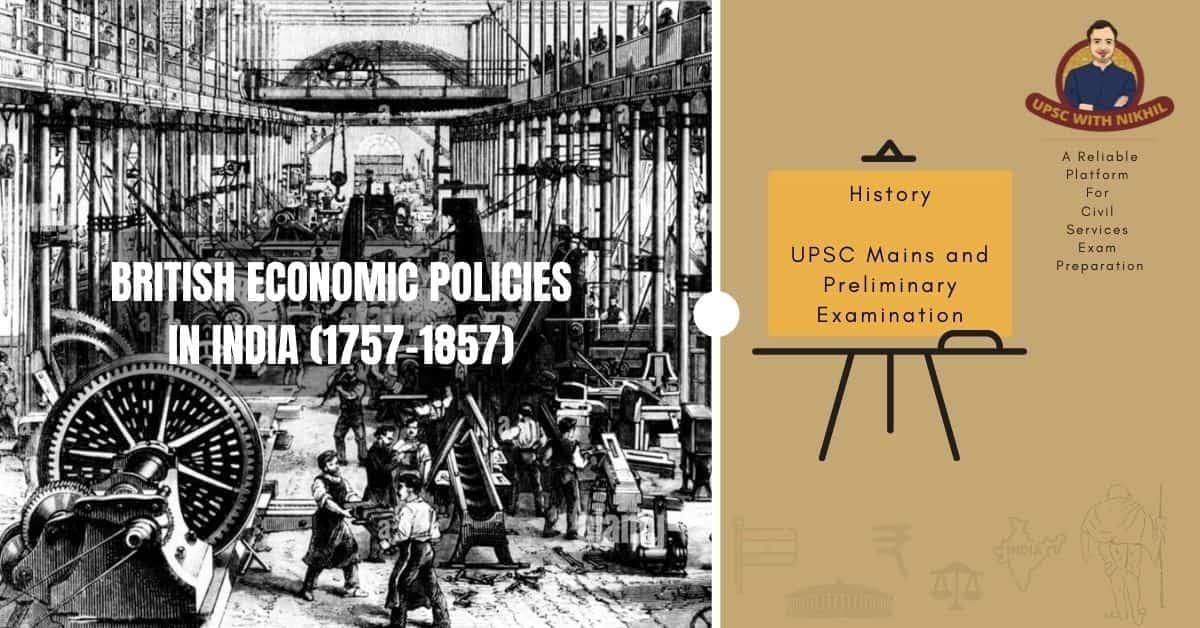Notes: Rural Life & Society | Social Studies & Pedagogy Paper 2 for CTET & TET Exams - CTET & State TET PDF Download
| Table of contents |

|
| Rural Life and Society Under Colonialism |

|
| Economic Policies of British |

|
| Demand for Indian Indigo |

|
| Colonialism and Tribal Society |

|
Rural Life and Society Under Colonialism

- Pre-Colonial Period : Before colonial rule, agriculture was the primary occupation for most people in India, and there was little external competition. British Colonial Rule : After the establishment of the East India Company, the British introduced various agrarian policies related to land revenue. These policy changes led to the commercialization of agriculture, which significantly impacted Indian farmers, often reducing their incomes to almost nothing.
- Peasant Struggles During British Rule : During colonial rule, most peasants struggled to survive on very low incomes with minimal resources. They faced pressures from government revenue demands, crop failures, and social obligations like marriages and festivals. These pressures forced many peasants to sell parts of their land or borrow money from village moneylenders. The moneylenders would mortgage the peasants’ land and charge high interest rates.
- Debt Among Peasants : A government survey in the mid-19th century found that eight out of ten peasants had unpaid debts, highlighting the severe financial struggles faced by rural families during this period.
Economic Policies of British

- The economic policies of the British Government in India brought about significant changes in agriculture, industries, and trade, as well as in the social conditions of rural people under colonialism.
- When the British arrived in India, villages were self-sufficient units, producing most of the necessary goods locally. Each village had a Panchayat to settle disputes, and farmers had rights over the land they cultivated, with protection against eviction. The villagers had limited interaction with the Mughal rulers, mainly for the payment of land revenue.
- However, the British changed this situation by taking over revenue collection. The revenue amount was fixed and required to be paid in cash, with no allowances for crises such as crop failures. This system was put in place to fund British administration and wars.
To facilitate this, the British introduced three new revenue collection systems:
(a) The Permanent Settlement of 1793
- This system was introduced in Bengal, Bihar, and Odisha.
- Under this system, land revenue was fixed permanently, and landowners (zamindars) were responsible for paying this fixed amount to the British.
- The zamindars had the right to collect rent from the peasants and could evict them if they failed to pay.
- This system led to the exploitation of peasants, as zamindars often increased rents to make a profit.
(b) The Ryotwari System
- This system was implemented in parts of Maharashtra, Gujarat, and Madras.
- Under the Ryotwari System, land revenue was assessed and collected directly from individual farmers (ryots) by the British.
- The revenue was based on the potential productivity of the land and was subject to periodic reassessment.
- This system gave farmers more security, as they could appeal against excessive assessments.
(c) The Mahalwari System
- This system was used in parts of Punjab, Uttar Pradesh, and Madhya Pradesh.
- Under the Mahalwari System, land revenue was assessed for a group of villages (mahal) and collected from the village headmen (mukaddams) or landowners.
- The revenue was based on the collective capacity of the villages to pay and was subject to periodic revision.
- This system aimed to promote collective responsibility and reduce individual burden.
Overall, these revenue collection systems had a profound impact on rural society in India. They altered traditional land ownership patterns, increased the financial burden on peasants, and contributed to social and economic changes in rural areas.
Permanent Settlement
In 1793, Cornwallis reformed the Permanent Settlement. In this revised settlement, the zamindars, who were responsible for collecting land revenue, were officially recognized as the landlords.
- The right to collect revenue was auctioned to the highest bidder for a period of five years.
- Land ownership rights were made hereditary and transferable. Zamindars were required to pay one-fourth of the revenue collected within a specified time frame.
- In 1799, zamindars were granted the authority to evict tenants or confiscate their property in cases of non-payment of rents.
Ryotwari System
- The Ryotwari System was a method of land settlement in the Madras Presidency during British rule in India. It is closely associated with Thomas Munro, who played a significant role in its implementation.
- In this system, the rent for land was negotiated directly between the government and the ryots (peasants or landowners). The government typically took a share of about half of the total crop value as revenue.
- However, the system was often harsh, with heavy revenue demands pushing many ryots into debt and dependence on money lenders.
Mahalwari System
- The Mahalwari System was a modified land revenue system introduced by the British in India, particularly in regions like Punjab, Delhi, and Western Uttar Pradesh.
- This system involved the periodic revision of land revenue assessments on a village and estate basis. Under the Mahalwari System, land was treated as saleable property, and the revenue on land was subject to regular revisions. This approach aimed to make the revenue system more flexible and responsive to changing circumstances.
Demand for Indian Indigo
- Indigo is a flowering plant that thrives in tropical regions and produces a vibrant blue color.
- In the past, it was commonly used for dyeing clothes in countries like Italy, France, and Britain.
- However, the supply of indigo was limited, leading to its high price.
- To meet the growing demand, British businessmen began cultivating indigo in various districts of Bengal, such as Nadia, Jessor, Dhaka, Pabna, and Rangpur, starting in 1788.
- Over time, they expanded indigo cultivation throughout Bangladesh.
- The British established houses, farms, and factories for buying, crushing, processing, and packaging raw indigo, known as 'Nil Kuthi.'
- By the 18th century, the demand for Indian indigo surged, coinciding with Britain's industrialization and increased cotton production, which created a massive need for cloth dyes.
- European countries discovered an alternative dye source called woad.
- In response to the rising demand for indigo in Europe, woad producers pressured their governments to ban indigo imports.
- Despite this, from 1788 to 1810, the percentage of indigo imports from India skyrocketed from 30 to 95 percent.
- The high profits associated with indigo cultivation attracted many Englishmen to become planters in the region.
Challenges Faced in Indigo Cultivation
- The peasants had entered into a contract with British businessmen regarding the cultivation of indigo. However, the price set for raw indigo by the businessmen was significantly lower than its market value. Since the peasants had already signed the contract, they were unable to protest against this unfair term.
- As a result of indigo cultivation, the affected peasants lost their paddy land, and the price of paddy increased due to the shift in land use. The peasants submitted a petition to the British Lord requesting an end to indigo cultivation, but their plea was rejected.
- Facing substantial losses, the peasants began to move from village to village, trying to raise awareness and gather support among fellow peasants to stop indigo cultivation. It took them 15 years of effort to motivate and unite the affected peasants against this practice.
Indigo on the Land of Ryots
- Under the ryots system, planters compelled ryots to sign a contract and an agreement known as Satta. Sometimes, they even pressured village headmen to sign the agreement on behalf of the ryots.
- Planters insisted that ryots cultivate indigo on the best soil, which the ryots preferred for rice cultivation. However, indigo depleted soil fertility and rendered the land unsuitable for any future cultivation.
Colonialism and Tribal Society
- The East India Company established its government in India and implemented revenue policies that impacted various sections of society. The laws introduced by the state had significant consequences for the people.
- It was the state that determined who would become richer, who would be poorer, who could acquire new land, and who would lose the land they lived on. The state also decided where peasants could go when they needed money. During the British rule, tribal people were among the most affected groups.
Impact of Colonial Rule on Tribal Life
During colonial rule, the life of tribal communities in India was significantly affected. The British made several changes that impacted their way of living, especially in terms of governance and land use.
- Reduction of Tribal Chiefs' Authority: The authority and importance of tribal chiefs were greatly diminished under colonial rule. This change disrupted the traditional leadership and governance structures within tribal communities.
- Disruption of Jhum Cultivation: Jhum cultivators, who practiced shifting cultivation, were forced to settle down. However, this transition was only partially successful, as many communities were not accustomed to settled agriculture and relied on their traditional practices.
- Forest Laws and Livelihood: The British introduced changes in forest laws that adversely affected many tribal communities dependent on forests for their livelihood. Tribals relied on forests for various resources, and the new laws restricted their access, impacting their way of life.
Occupations of Various Tribes in India
The occupations of various tribes across India can be categorized into the following groups:
- Jhum Cultivators: These tribes practice ‘slash and burn’ cultivation, primarily found in the forested and hilly areas of Central and North-East India. This method involves clearing a forested area by cutting and burning the vegetation, and then planting crops in the nutrient-rich soil.
- Settled Cultivators: Tribes like the Mundas, Gonds, and Santhals have rights over the land they cultivate. These groups engage in settled agriculture, where they grow crops on the same piece of land over an extended period.
- Hunters and Gatherers: Tribes such as the Khonds of Odisha continue to live in forests, relying on hunting and gathering for their sustenance. They follow traditional systems of barter to obtain supplies, exchanging goods and services without the use of money.
- Cattle Herders and Shepherds: Tribes like the Van Gujjars in Himachal Pradesh, Bakarwals in Kashmir, Labadis in Andhra Pradesh, and Gaddis in Kulu are examples of cattle herders and shepherds. These groups primarily depend on livestock for their livelihood, herding and tending to animals such as sheep, goats, and cattle.
Impact of Colonial Rule on Tribal Society
- The British establishment in India was a gradual process involving the piecemeal conquest, consolidation, and colonization of the economy and society.
- This process generated discontent, resentment, and resistance at every stage.
Changes in Forest Laws and Their Effects
- The British introduced several changes to forest laws, significantly impacting tribal lives.
- Many tribal groups reacted against these colonial forest laws by disobeying the new regulations and continuing practices that were deemed illegal, sometimes even resorting to open rebellion.
- Notable examples include the revolt of Songram Sangma in 1906 in Assam and the forest Satyagraha of the 1930s in the central provinces.
|
75 videos|320 docs|78 tests
|
FAQs on Notes: Rural Life & Society - Social Studies & Pedagogy Paper 2 for CTET & TET Exams - CTET & State TET
| 1. What are some key characteristics of rural life in India? |  |
| 2. How does rural society impact education in India? |  |
| 3. What role do festivals play in rural communities? |  |
| 4. How is agriculture evolving in rural areas of India? |  |
| 5. What challenges do rural communities face today? |  |















